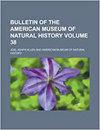Phylogeny, Classification, Mesozoic Fossils, and Biogeography of the Leiinae (Diptera: Mycetophilidae)
IF 3.4
2区 环境科学与生态学
Q1 BIODIVERSITY CONSERVATION
Bulletin of the American Museum of Natural History
Pub Date : 2021-03-16
DOI:10.1206/0003-0090.446.1.1
引用次数: 4
Abstract
ABSTRACT The relationships among the genera of fungus gnats in the mycetophilid subfamily Leiinae are unclear, and the monophyly of this group is questionable. This monograph provides an extensive phylogenetic study of the Leiinae based on morphological data from a large taxonomic sample, including all genera that have ever been assigned to the subfamily and a wide outgroup sampling to properly test subfamilial monophyly. A data matrix with 128 morphological features of 117 terminal taxa was carried out under parsimony using different implicit weight schemes. All recovered topologies support a monophyletic Leiinae that is more restricted than the usual delimitation of the subfamily. We found no consistent evidence that a clade with Docosia Winnertz, Novakia Strobl, Ectrepesthoneura Enderlein, and Tetragoneura Winnertz group together with the remaining genera of Leiinae. A name with subfamily rank—Tetragoneurinae, already present in the literature—is used here to refer to this group. The allactoneurine genera Sticholeia Søli and Allactoneura de Meijere form a clade with the leiine genus Leiella and the genera of Manotinae, which is deeply nested within the Leiinae. The male terminalia patterns found within the subfamily are analyzed and illustrated. A classification for the Leiinae is proposed grouping 33 genera in seven clades ranked as tribes: Selkirkiini Enderlein, Megophthalmidiini, trib. nov., Rondaniellini, trib. nov., Cycloneurini Shaw and Shaw, Manotini Edwards, Anomalomyiini, trib. nov., and Leiini Edwards. A key for the world genera of Leiinae is also provided. The Cretaceous mycetophilid fossil record is revisited and the biogeographic evolution of the Leiinae is discussed.蚁科的系统发育、分类、中生代化石和生物地理学(双翅目:蚁科)
摘要:喜菌亚科真菌蚊属之间的关系尚不清楚,该类群的单系性值得怀疑。本专著提供了一个广泛的系统发育研究,基于形态学数据,从一个大的分类样本,包括所有属,曾经被分配到亚科和广泛的外群抽样,以适当地测试亚科单系。采用不同的隐式权值方案,在简约性条件下得到包含117个终末分类群128个形态特征的数据矩阵。所有恢复的拓扑结构都支持单系的Leiinae,这比通常的亚科划分更受限制。我们没有发现与Docosia Winnertz、Novakia strobel、Ectrepesthoneura Enderlein和Tetragoneura Winnertz类群与Leiinae其余属存在一致的证据。一个亚科级别的名字——四虎蛛,已经出现在文献中——在这里被用来指代这个群体。异尿尿属Sticholeia Søli和异尿尿属de Meijere与异尿尿属Leiella和Manotinae属形成一个分支,深嵌在Leiinae中。在亚科中发现的雄性终端模式进行了分析和说明。提出了狼科的分类方法,将33个属分为7个分支,按部落划分:Selkirkiini Enderlein, Megophthalmidiini, tribe。11月,Rondaniellini,部落。11月,Cycloneurini Shaw和Shaw, Manotini Edwards, Anomalomyiini,部落。11月,和雷尼·爱德华兹。并给出了世界属的检索键。本文回顾了白垩纪嗜菌类化石记录,并讨论了莱茵科的生物地理演化。
本文章由计算机程序翻译,如有差异,请以英文原文为准。
求助全文
约1分钟内获得全文
求助全文
来源期刊
CiteScore
7.90
自引率
2.90%
发文量
4
审稿时长
>18 weeks
期刊介绍:
The Bulletin, published continuously since 1881, consists of longer monographic volumes in the field of natural sciences relating to zoology, paleontology, and geology. Current numbers are published at irregular intervals. The Bulletin was originally a place to publish short papers, while longer works appeared in the Memoirs. However, in the 1920s, the Memoirs ceased and the Bulletin series began publishing longer papers. A new series, the Novitates, published short papers describing new forms.

 求助内容:
求助内容: 应助结果提醒方式:
应助结果提醒方式:


